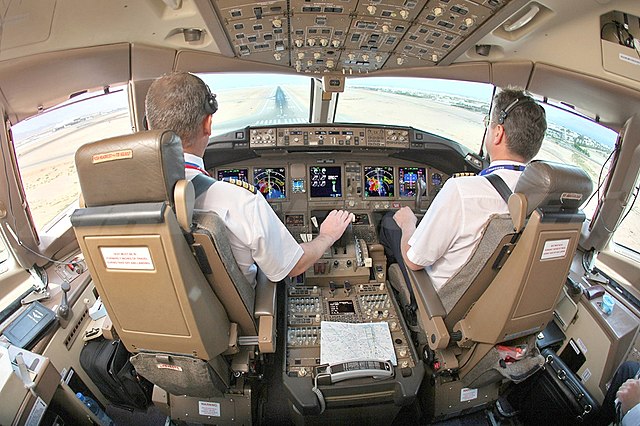The wingspan of a bird or an airplane is the distance from one wingtip to the opposite wingtip. For example, the Boeing 777–200 has a wingspan of 60.93 metres, and a wandering albatross caught in 1965 had a wingspan of 3.63 metres, the official record for a living bird.
The term wingspan, more technically extent, is also used for other winged animals such as pterosaurs, bats, insects, etc., and other aircraft such as ornithopters.
In humans, the term wingspan also refers to the arm span, which is the distance between the length from the end of an individual's arm to the individual's fingertips on the other arm when raised parallel to the ground at shoulder height.
The distance A to B is the wingspan of this Boeing 777-200ER
The Boeing 777, commonly referred to as the Triple Seven, is an American long-range wide-body airliner developed and manufactured by Boeing Commercial Airplanes. The 777 is the world's largest twinjet and the most-built wide-body airliner.
The jetliner was designed to bridge the gap between Boeing's other wide body airplanes, the twin-engined 767 and quad-engined 747, and to replace aging DC-10 and L-1011 trijets. Developed in consultation with eight major airlines, the 777 program was launched in October 1990, with an order from United Airlines. The prototype was rolled out in April 1994, and first flew in June. The 777 entered service with the launch operator United Airlines in June 1995. Longer-range variants were launched in 2000, and first delivered in 2004.
Boeing 777
The Boeing 777-100 trijet concept was proposed in 1978 to compete with other trijets of the time.
The two-crew glass cockpit uses fly-by-wire controls
The 777 made its maiden flight on June 12, 1994.





